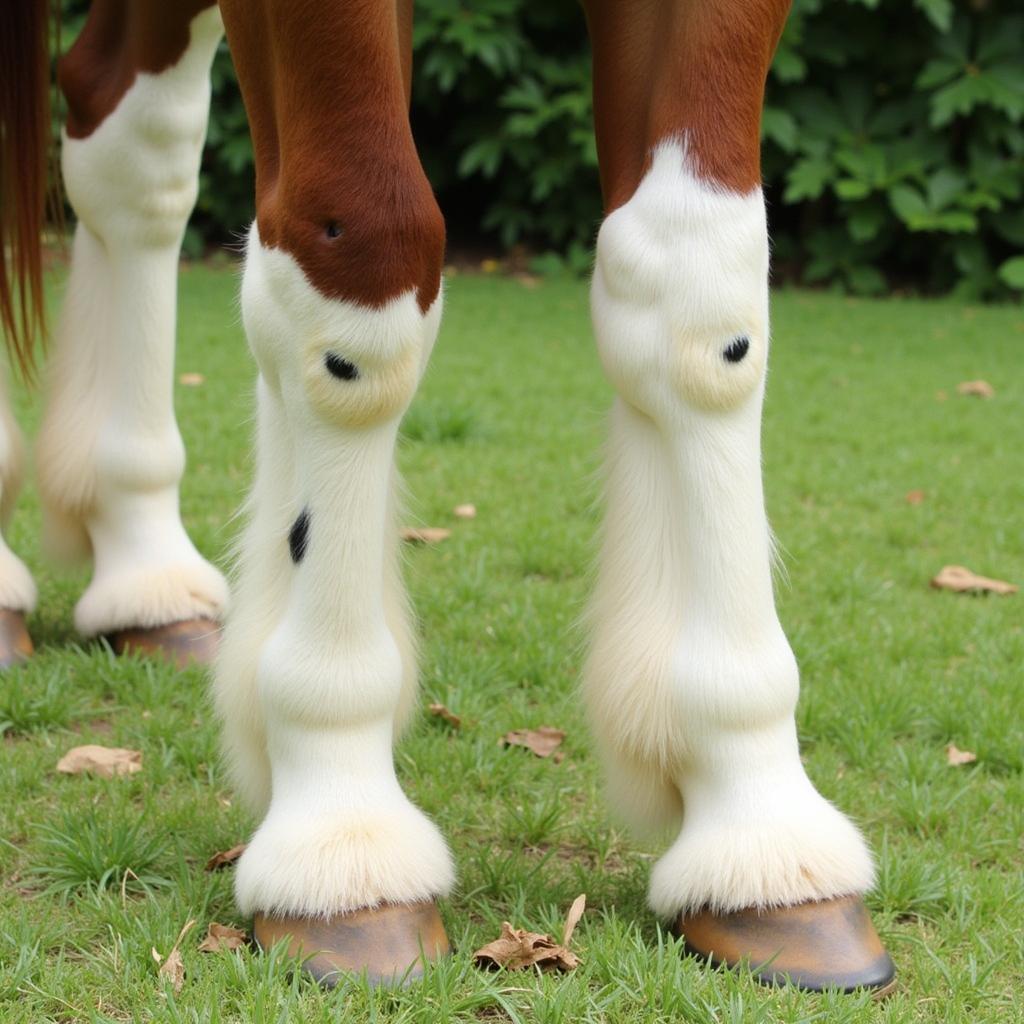Unusual Horse Markings add a unique touch to each equine individual, turning them into living works of art. These distinct patterns, ranging from intricate face markings to unexpected leg and body spots, often have fascinating names and origins. Understanding these markings can enhance your appreciation for the diversity within the horse world. Let’s delve into the captivating world of unusual horse markings and uncover the stories they tell.
Beyond the Basics: Exploring Rare Horse Markings
Most horse owners are familiar with common markings like stars, snips, and stripes. However, the world of equine markings extends far beyond these basics. From intriguing facial patterns to unusual leg markings, certain patterns stand out for their rarity and striking appearance. Understanding these unusual horse markings adds a layer of fascination to horse ownership and allows for easier identification. This can be especially useful when registering your horse or describing it to others. Here are some examples of the rarer markings you might encounter. A chin spot is a small white patch located on the horse’s lower lip or chin. A bonnet covers the forehead and often extends down the face, sometimes even covering the eyes.
 Horse with unusual leg markings
Horse with unusual leg markings
What determines these intricate designs? Genetics play a major role in the development of horse markings. rare breeds of horses often exhibit distinctive markings that are characteristic of their breed. For example, Appaloosas are renowned for their leopard complex spotting patterns. The intricate interaction of genes dictates the size, shape, and placement of each marking, making every horse truly unique.
Identifying Unusual Horse Markings: A Guide for Horse Lovers
Knowing the terminology used to describe unusual horse markings allows for clear communication between horse enthusiasts, veterinarians, and breeders. It’s like having a shared language specifically for describing the beautiful art that nature paints on each horse. This shared understanding makes identification and record-keeping much more accurate and efficient.
What are Some Common Types of Unusual Markings?
- Bend-Or Spots: Dark spots within a white marking, commonly found on the legs.
- Ermine Marks: Small, dark spots at the edges of a white coronet band, giving a dotted appearance.
- Whorls: Patches of hair that grow in a circular pattern, often found on the forehead, neck, or chest. The placement of whorls is sometimes believed to be linked to a horse’s temperament, although this remains anecdotal.
“Identifying unusual horse markings goes beyond simply recognizing a pretty pattern; it provides a deeper understanding of the individual horse and its heritage,” says Dr. Emily Carter, equine veterinarian and expert in equine genetics.
The Allure of the Unique: Why We Love Unusual Markings
Unusual markings add to the individuality of a horse. They make a horse memorable and contribute to its overall charm. Just as a birthmark might distinguish a person, unique markings provide a horse with its own special identity. These patterns can even become part of a horse’s name, further emphasizing their distinctive appearance. breyer horse value guide
“Every unique marking tells a story,” notes Sarah Miller, a renowned horse breeder specializing in Appaloosas. “These patterns are a testament to the incredible genetic diversity within the equine world.” peter stone horses for sale
In conclusion, unusual horse markings add a touch of magic to the equine world. From the distinctive blaze that splits into a lightning bolt pattern to the delicate ermine spots adorning a coronet band, these markings highlight the individuality of each horse. Understanding and appreciating these patterns enhances our connection with these magnificent animals. By recognizing and correctly identifying unusual horse markings, we celebrate the diversity and artistry of nature’s canvas. horse foot ring
FAQ
- Do unusual markings affect a horse’s health? No, most unusual markings are purely cosmetic and have no impact on a horse’s health or performance.
- Can markings change over time? While some markings may become less distinct with age, they generally remain consistent throughout a horse’s life.
- Are certain markings more common in specific breeds? Yes, some breeds are predisposed to particular markings. breyer horse stud spider
- How are horse markings recorded? Horse markings are often documented in detail during registration processes, including descriptions and diagrams.
- What is the rarest horse marking? Pinpointing the single rarest marking is difficult, but some, like chimerism (two sets of DNA resulting in a mosaic-like coat), are exceptionally rare.
- Do whorls have any significance? While some believe whorl placement relates to temperament, this lacks scientific evidence.
- What resources can I use to learn more about horse markings? Many online resources and books offer in-depth information on equine markings.
Need help with your horse or other pet? Contact us 24/7: Phone: 0772127271, Email: [email protected] or visit us at QGM2+WX2, Vị Trung, Vị Thuỷ, Hậu Giang, Việt Nam.